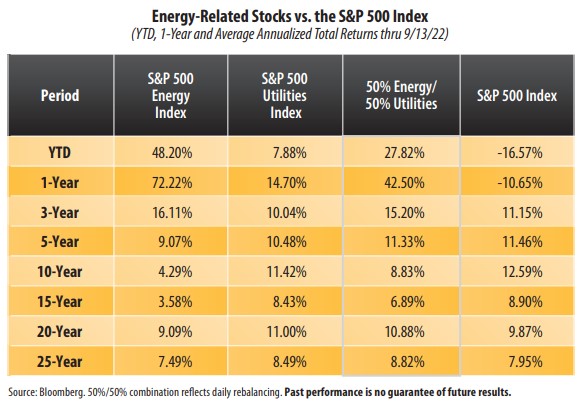
View from the Observation Deck
1. Today's blog post compares the performance of energy-related stocks to the broader market, as measured by the S&P 500 Index, over an extended period.
2. Why target energy-related stocks? First, oil/gasoline, natural gas and electricity are basic necessities for most people and they are all relatively expensive at the moment. Second, there is a strong push by the Democrats, in particular, to get consumers to opt for electric vehicles (EVs) over combustible-engine vehicles moving forward. Some car manufactures are gearing up to emphasize EV models as well. If this scenario comes to fruition, one would expect a shift in demand away from Energy (oil and gasoline) to Utilities (electrical grid). We will see.
3. Utilities outperformed Energy in five of the eight periods in the table above, but not the three most recent periods.
4. Utilities outperformed the S&P 500 Index in four of the eight periods, including the two most recent periods.
5. Energy outperformed the S&P 500 Index in three of the eight periods, all of which were recent.
6. The 50/50 split between Energy and Utilities outperformed the S&P 500 Index in five of the eight periods, including the three most recent periods.
7. For the 25-year period ended 9/14/22, the cumulative total return on the S&P 500 Utilities Index was 668.28%, compared to 576.14% for the S&P 500 Index and 507.61% for the S&P 500 Energy Index, according to Bloomberg. The 50% Energy/50% Utilities split posted a cumulative total return of 587.95%, which
outperformed the S&P 500 Index over that span.
8. As of 9/14/22, Energy and Utilities had a combined weighting of approximately 8% in the S&P 500 Index, according to Bloomberg.



